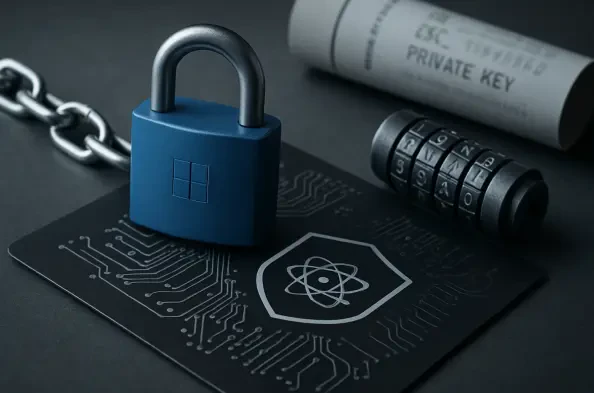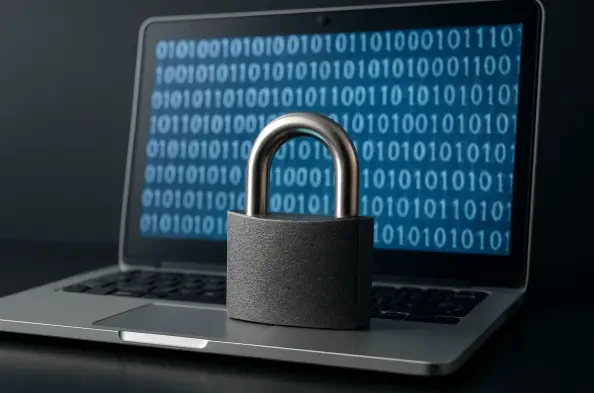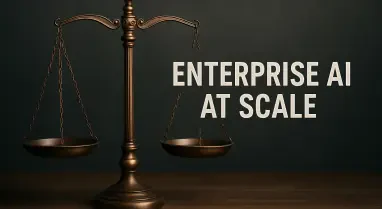Imagine a world where the most secure data encryption methods, relied upon by governments and corporations alike, are rendered obsolete overnight by the raw power of quantum computing. This looming threat, capable of unraveling asymmetric encryption that underpins global digital security, is no longer a distant concern but a pressing reality that demands immediate attention. Microsoft’s Quantum-Safe Security initiative stands as a proactive response to this challenge, aiming to fortify its vast ecosystem against quantum attacks. This review delves into the intricacies of Microsoft’s approach, evaluating its technical innovations, strategic timelines, and real-world implications in an era where data protection is paramount.
Understanding the Quantum Threat and Microsoft’s Response
Quantum computing poses an unprecedented risk to classical cryptographic systems by leveraging immense computational power to break widely used encryption protocols. Algorithms that secure online transactions, communications, and sensitive data could be compromised through techniques like Shor’s algorithm, which efficiently solves problems intractable for traditional computers. This potential for “harvest-now, decrypt-later” attacks—where data is collected today for decryption in the future—has galvanized the tech industry into action.
Microsoft has positioned itself at the forefront of this battle by developing post-quantum cryptography (PQC), a suite of algorithms designed to resist quantum threats. With a sprawling ecosystem that includes Windows, Azure, and Microsoft 365, the company is integrating these solutions to protect millions of users and businesses. Its commitment extends beyond internal systems, influencing broader industry standards and governmental policies focused on quantum resilience.
The significance of these efforts cannot be overstated in a landscape where quantum advancements are accelerating. As nations and tech giants race to address this paradigm shift, Microsoft’s proactive stance underscores its role as a key player in shaping a secure digital future, aligning with global initiatives to safeguard critical infrastructure.
Core Features of Microsoft’s Quantum-Safe Program
Post-Quantum Cryptography Innovations
At the heart of Microsoft’s quantum-safe strategy lie the PQC algorithms, specifically those standardized by the National Institute of Standards and Technology (NIST), such as ML-KEM for key encapsulation and ML-DSA for digital signatures. These algorithms are engineered to withstand attacks from quantum machines, offering a robust defense against future threats. Their integration into Microsoft’s cryptographic library, SymCrypt, marks a pivotal step in ensuring long-term data protection across diverse platforms.
The adoption of these standards reflects a meticulous approach to security, prioritizing algorithms that have undergone rigorous peer review and testing. By embedding them into foundational systems, Microsoft aims to create a seamless transition for applications and services, minimizing disruption while maximizing resilience. This technical groundwork is essential for maintaining trust in an increasingly vulnerable digital environment.
SymCrypt and Community Engagement
SymCrypt serves as the backbone of Microsoft’s cryptographic infrastructure, supporting a wide array of platforms from Windows to Linux through compatibility with OpenSSL. This library not only facilitates the deployment of PQC algorithms but also ensures that security updates can be efficiently rolled out across heterogeneous systems. Its versatility is a testament to Microsoft’s engineering prowess in addressing complex compatibility challenges.
Beyond its technical role, SymCrypt’s availability as an open-source resource on GitHub fosters transparency and collaboration. By inviting community input, Microsoft enhances the robustness of its solutions through diverse perspectives and expertise. This open approach strengthens trust among developers and enterprises, encouraging widespread adoption of quantum-safe practices in the broader tech ecosystem.
Strategic Implementation and Competitive Positioning
Microsoft’s roadmap for quantum-safe security unfolds in a structured three-phase plan, targeting full compliance by 2033. The initial phase, already underway, focuses on embedding foundational security components into core systems, with significant progress expected to continue over the next few years. Subsequent phases will address critical infrastructure services between now and 2029, followed by a comprehensive rollout to all services and endpoints from 2027 onward.
This ambitious timeline positions Microsoft ahead of the U.S. government’s 2035 mandate for quantum-safe compliance, with early deployments planned to begin in 2029. Compared to peers like IBM and Thales, who also target 2033, and others such as AWS and Google aiming for 2035, Microsoft demonstrates leadership in prioritizing urgency and preparedness. This strategic foresight underscores a commitment to staying ahead of emerging threats.
The phased approach allows for tailored transitions, accommodating the unique needs of different services and mitigating risks of performance bottlenecks. By balancing speed with stability, Microsoft ensures that its vast user base experiences minimal disruption while benefiting from cutting-edge security enhancements, setting a benchmark for industry peers.
Practical Applications and Industry Collaboration
Across its ecosystem, Microsoft is actively applying quantum-safe security to critical areas such as Azure authentication, Microsoft 365 communications, and Windows TLS connections. These implementations are designed to protect sensitive operations, ensuring that data remains secure even as quantum capabilities evolve. Early testing through Windows Insider Preview Builds offers users a glimpse into these advancements, providing valuable feedback for refinement.
Specific use cases, such as hybrid key exchange mechanisms based on Internet Engineering Task Force (IETF) standards, highlight Microsoft’s pragmatic approach to immediate security needs. These hybrid models combine classical and quantum-resistant algorithms, offering a bridge solution that maintains functionality while full PQC adoption is phased in. Such innovations reflect a deep understanding of real-world constraints and user expectations.
Alignment with NIST standards and collaboration with industry partners further amplify the impact of these efforts. By prioritizing interoperability, Microsoft ensures that its quantum-safe solutions integrate smoothly with external systems, fostering a unified front against quantum threats. This cooperative spirit is vital for establishing consistent security practices across diverse technological landscapes.
Challenges in the Quantum-Safe Transition
Transitioning to full PQC is not without hurdles, particularly in terms of performance and compatibility across Microsoft’s extensive range of products and services. Quantum-resistant algorithms often demand greater computational resources, potentially impacting system efficiency if not optimized. Addressing these constraints requires innovative engineering to balance security with user experience.
Hybrid cryptographic models serve as an interim solution to navigate these technical challenges, blending traditional and quantum-safe methods to maintain stability. While effective in the short term, this approach necessitates careful management to ensure that temporary measures do not become long-term vulnerabilities. Microsoft’s strategy here reflects a calculated trade-off between immediate needs and future goals.
Regulatory and market dynamics add another layer of complexity, with varying global timelines and adoption rates posing obstacles to uniform implementation. Convincing industries worldwide to embrace quantum-safe standards demands not only technical excellence but also diplomatic coordination. Microsoft’s role in advocating for cohesive policies will be crucial in overcoming these systemic barriers.
Future Prospects in a Quantum Era
Looking ahead, Microsoft’s quantum-safe initiatives are poised for further evolution, with potential refinements to PQC algorithms enhancing their efficiency and applicability. Integration with emerging technologies like artificial intelligence and the Internet of Things could expand the scope of protection, addressing new attack vectors as they arise. Such adaptability will be key to maintaining relevance in a rapidly shifting tech landscape.
The long-term impact of these efforts extends beyond individual systems, potentially redefining cybersecurity standards on a global scale. As a leader in this domain, Microsoft has the opportunity to influence best practices, encouraging other organizations to prioritize quantum resilience. This ripple effect could accelerate the industry’s collective transition toward a more secure digital framework.
Speculation on breakthroughs in quantum-safe technologies suggests that unexpected innovations might shorten timelines or introduce novel defenses. Whether through algorithmic advancements or hardware optimizations, such developments could redefine the pace of adoption, positioning Microsoft to capitalize on cutting-edge research and maintain its competitive edge.
Final Reflections and Path Forward
Microsoft’s journey toward quantum-safe security unfolds as a pioneering endeavor, marked by strategic planning and technical innovation that address one of the most formidable challenges in modern cybersecurity. The phased integration of post-quantum cryptography, underpinned by robust tools like SymCrypt, demonstrates a commitment to safeguarding vast digital ecosystems against emerging threats. This initiative stands as a testament to proactive leadership in an era of uncertainty.
Moving forward, stakeholders across industries should focus on aligning with standardized frameworks like those championed by NIST, ensuring interoperability as quantum-safe solutions become mainstream. Enterprises must prioritize early adoption and testing of hybrid models to mitigate risks while preparing for full transitions. Collaborative efforts, supported by open-source resources, will be essential in building a resilient global infrastructure.
Ultimately, the path ahead requires sustained investment in research and policy advocacy to bridge gaps in readiness and awareness. By fostering dialogue between technologists, regulators, and businesses, the groundwork laid by initiatives like Microsoft’s can evolve into a cohesive defense against quantum disruptions, securing the digital future for generations to come.






